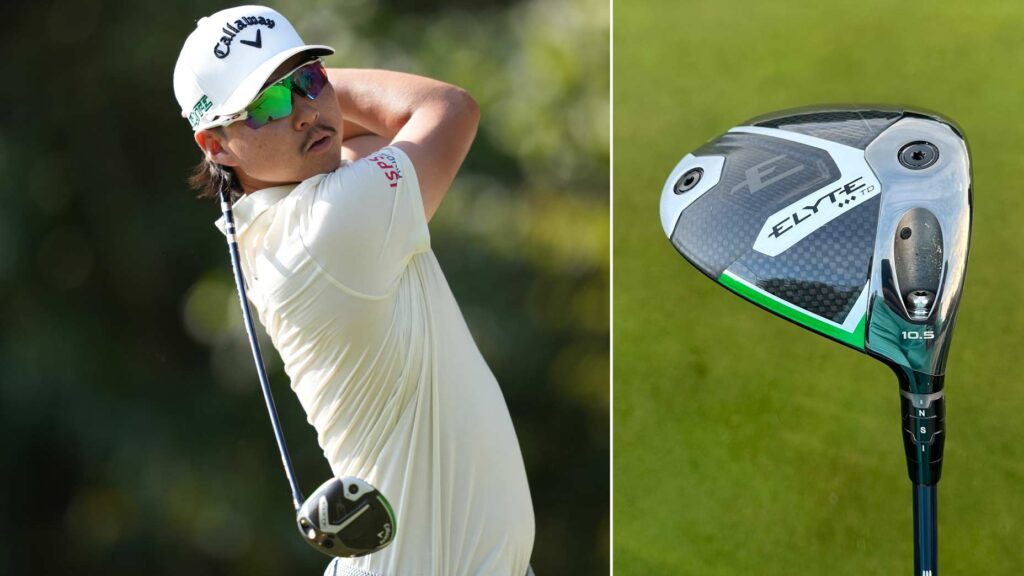Understanding Modern Golf Equipment Trends: The Shift in Driver Technology and Player Preferences
In the dynamic world of professional golf, equipment schemes can reveal significant trends in player performance and preferences. This week, GOLF’s Fully Equipped report highlights notable changes on the PGA Tour, focusing on how top players adapt their equipment to enhance performance. One standout case is Min Woo Lee’s switch to Callaway’s Eltye Triple Diamond Tour Draw driver—a move that underscores a broader trend towards optimizing shot shaping in modern golf.
The Rise of the Fade: A Game-Changing Shot Shape
Over recent years, golf has witnessed a marked shift towards the fade as the preferred shot shape among professional players. This transition aligns with the evolution of swing techniques, where players are now favoring powerful, left-to-right shots over traditional push-draws. This change has led to the development of specialized equipment designed to maximize performance for high-speed swings, exemplified by Lee’s impressive 124+ mph ball speed, ranking him among the elite on the tour.
Callaway’s Triple Diamond Tour Draw: Features and Benefits
To understand Lee’s switch to the Callaway Eltye Triple Diamond Tour Draw, we need to examine the technology behind the club. The Triple Diamond TD is uniquely designed with a smaller head and a right bias that enhances shot shaping for players. This optimization allows for improved control and spin—a necessity for maintaining accuracy under pressure. The club’s design borrows from Tour insights, catering to elite players who demand precision and performance from their equipment.
Addressing Performance Anxiety with Equipment Changes
Despite Lee’s promising skills, he faced issues with consistency, particularly fearing misses to the right. Such anxieties can greatly affect performance, especially in high-stakes situations. With a drop from 5th to 102nd in Strokes Gained: Off-the-tee, it became clear that changes were necessary. The new driver head provided a solution that eliminated excessive right bias, allowing Lee to regain confidence in his swing without altering his preferred shaft and setup.
Tour Performance and Immediate Impacts
Lee’s transition to the Triple Diamond TD has yielded impressive results in recent tournaments. Following the switch, he stood second in Strokes Gained: Off-the-tee and tied for first in driving accuracy at the FedEx Open de France. These numbers indicate that the new driver positively impacted Lee’s game, providing further proof of how critical equipment choices can influence outcomes on the course.
The Changing Landscape of Irons: Bye-bye, 4-Irons
Meanwhile, a significant trend in the equipment landscape sees a growing number of players opting to remove 4-irons from their bags in favor of more forgiving clubs like hybrids and higher-lofted fairway woods. This shift speaks to the evolving needs for distance and control as players become increasingly reliant on technology for enhancing performance. Players like those at the Sanderson Farms Championship illustrate this new norm, where nearly a dozen professionals chose to replace traditional long irons.
Technological Advancements: A New Era for Fairway Woods and Hybrids
The advancements in golf technology have allowed for hybrid clubs and upgraded fairway woods to rise in popularity among players. Companies like Ping have designed models that offer improved launch conditions and better control, making these clubs suitable replacements for long irons. The tall face structure in models like the Ping G440 reflects a desire for both confidence and forgiveness, underscoring the new approach to club selection in the professional arena.
Odyssey’s Innovative Putting Technology
Additionally, new releases like Odyssey’s Square 2 Square Tri-Hot putters reveal that innovation isn’t confined to drivers alone. With a focus on enhanced weighting and advanced materials, these putters aim to provide players with refined feel and control. The use of a dual-material face insert further exemplifies the trend toward technology-driven performance improvements in the short game, ensuring players have access to cutting-edge tools.
Insights from the Tour: Player Preferences and Changes
Several other notable gear changes have emerged within the Tour scene, including Christiaan Bezuidenhout’s adoption of PXG’s Lightning driver and fairway wood. Furthermore, Titleist drivers have surged in popularity, reflecting a preference for superior equipment within the professional ranks. The continuous evolution of golf gear highlights the importance of staying attuned to player feedback and performance metrics to develop equipment that meets the demands of today’s golfers.
Future Trends: Anticipating the Next Shift in Equipment
As golfers and manufacturers continue to explore innovative technologies, the future of golf equipment seems poised for further transformation. The combination of advanced materials and data analytics enables players to make more informed decisions in their equipment choices. The value of customized fitting processes will become increasingly critical as players seek to gain a competitive edge on the golf course.
Conclusion: Navigating Equipment Choices for Success
In conclusion, the interplay between modern golf equipment and player preferences paints a fascinating picture of the sport’s evolution. As players like Min Woo Lee adapt their clubs for improved performance, the industry as a whole responds with cutting-edge innovations. The trends towards fading shots, hybrid clubs, and specialized drivers personify a rapidly changing landscape that continues to redefine how golfers approach their game. As we look ahead, understanding these shifts will be essential for both amateur and professional golfers aiming for success on the course.


